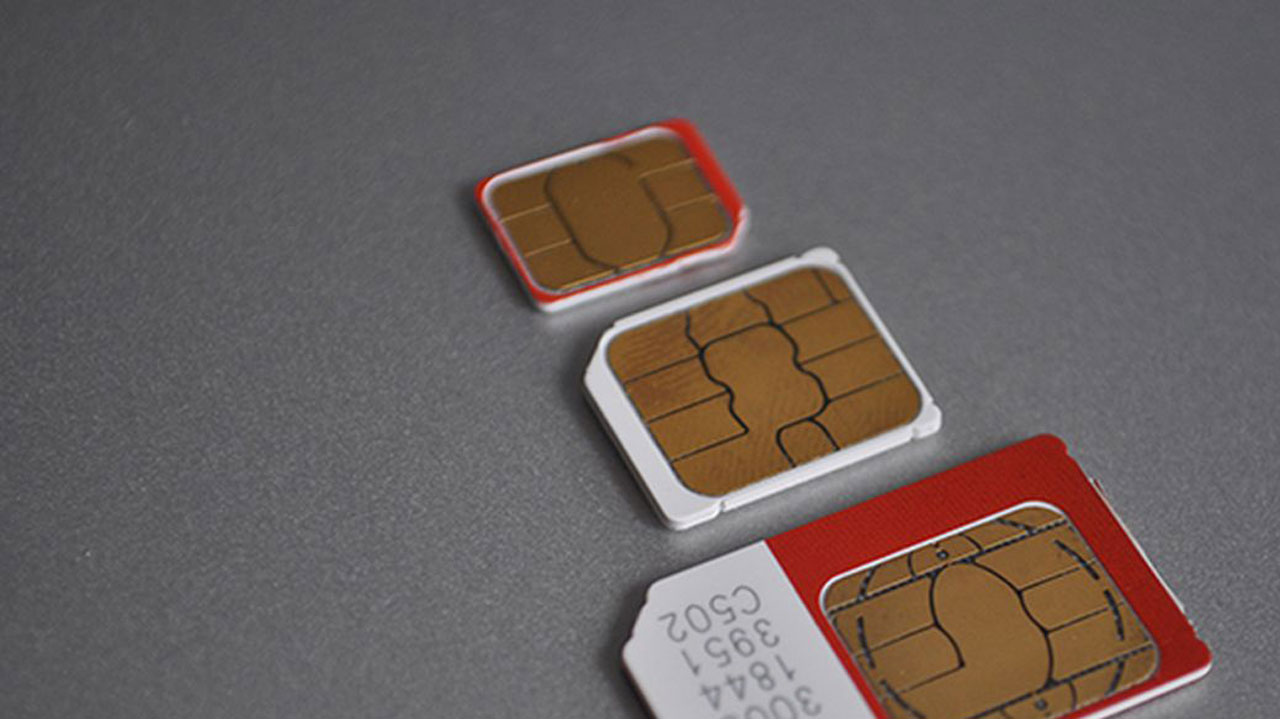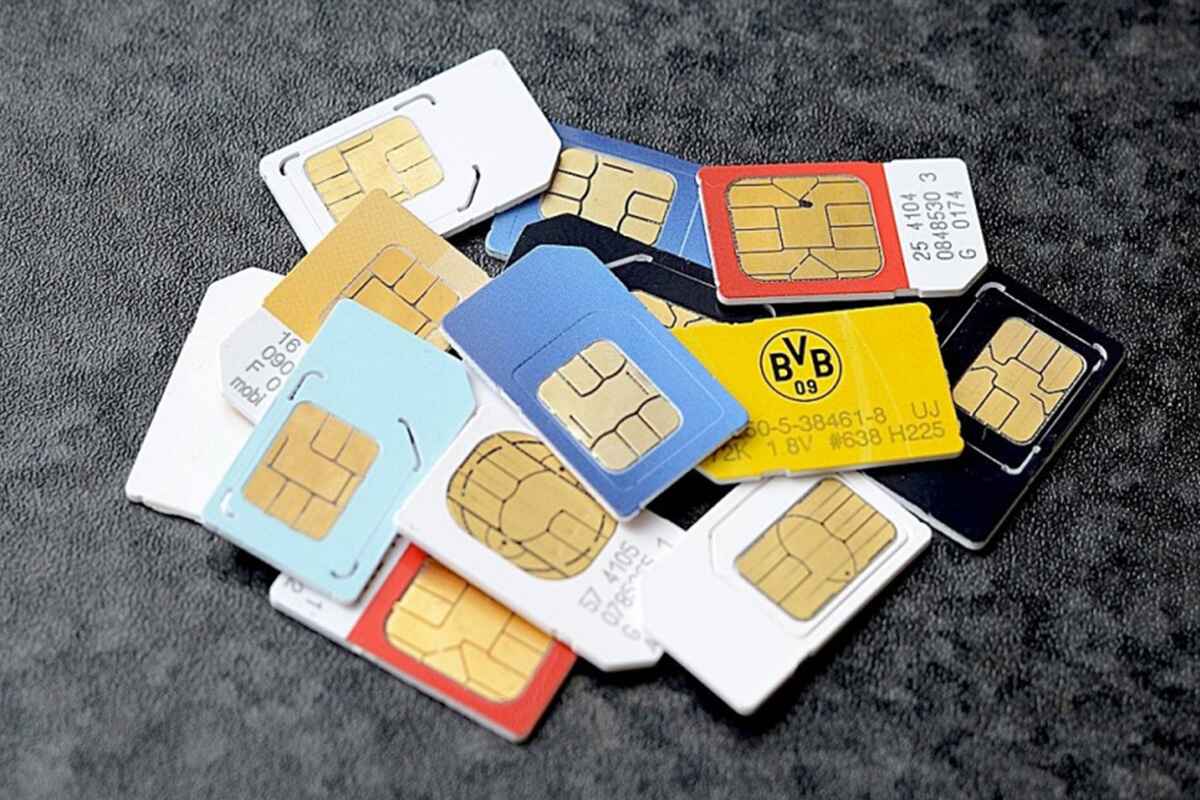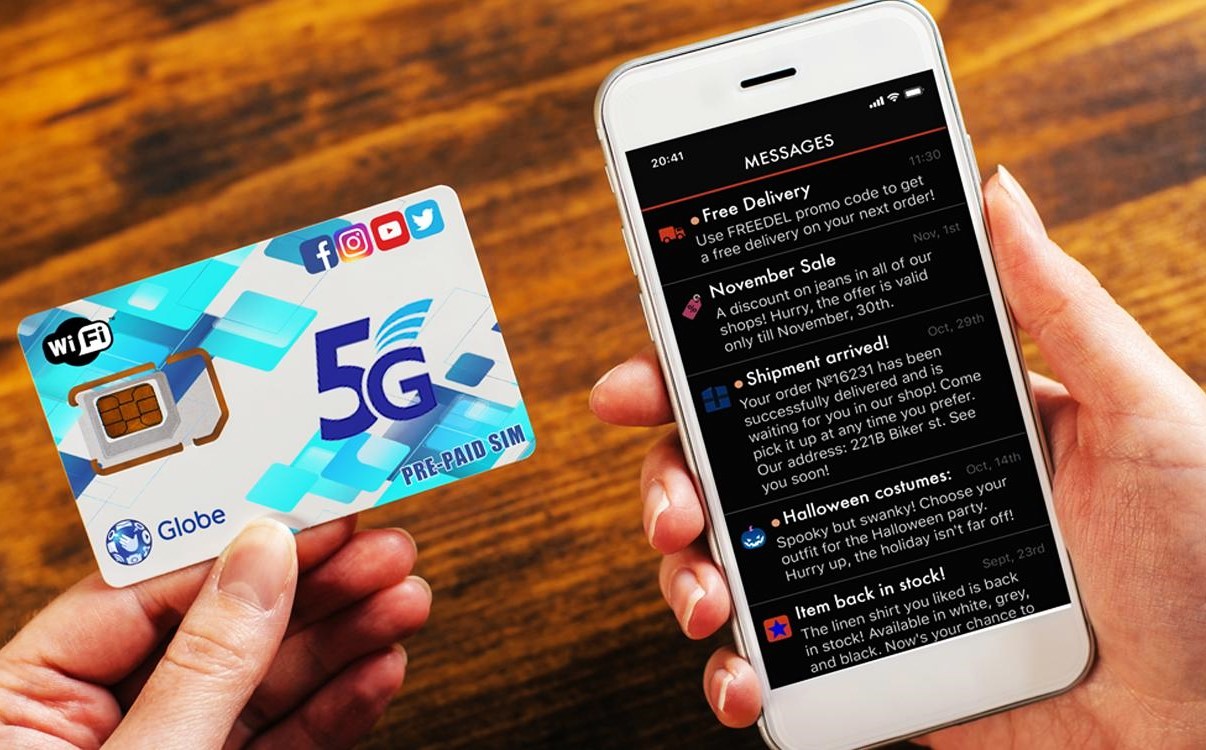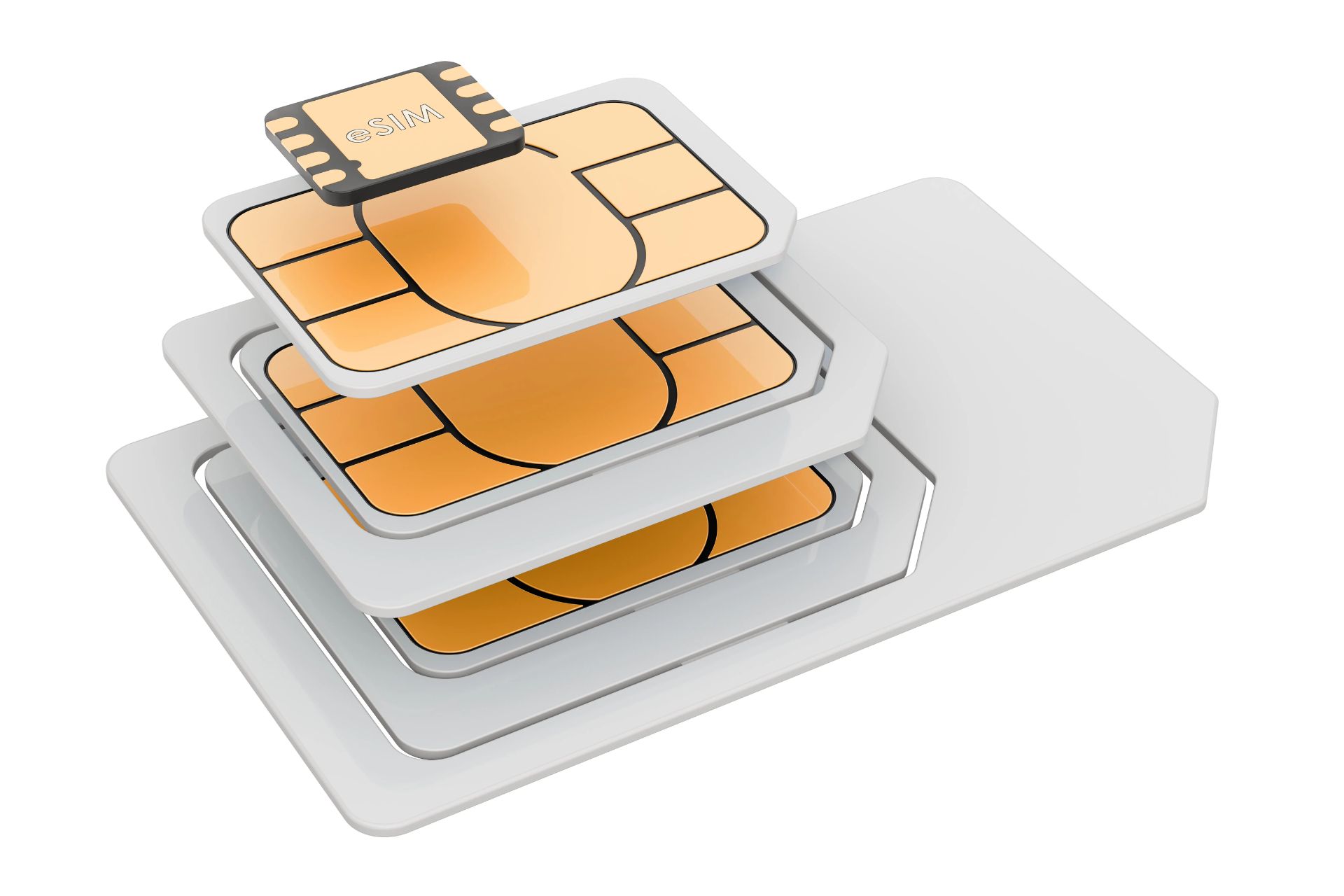Introduction
Mobile devices have become an integral part of our daily lives, serving as our gateway to communication, information, and entertainment. With the widespread use of smartphones and the increasing reliance on mobile networks, the security of our SIM cards has become a critical concern. A hacked SIM card can lead to a myriad of issues, including unauthorized access to sensitive information, fraudulent activities, and compromised communication channels. In this comprehensive guide, we will delve into the signs of a hacked SIM card, the necessary steps to take when suspicion arises, and the crucial measures to secure your mobile device and prevent future hacks.
The implications of a hacked SIM card extend beyond mere inconvenience; they can pose a significant threat to your privacy and financial security. Recognizing the signs of a compromised SIM card and understanding the appropriate course of action is paramount in safeguarding your personal and professional data. Whether you are a casual smartphone user or a business professional relying on mobile connectivity for critical operations, staying informed about the risks and solutions associated with hacked SIM cards is essential.
As we navigate through this guide, we will explore the proactive measures to mitigate the risks of SIM card hacking, including establishing communication with your mobile service provider, securing your mobile device and associated accounts, and implementing strategies to prevent future breaches. By equipping yourself with the knowledge and tools to respond effectively to a hacked SIM card, you can fortify your defenses against potential security threats and maintain the integrity of your mobile communications.
In the following sections, we will delve into the nuances of identifying a hacked SIM card, the immediate steps to take when suspicions arise, and the collaborative efforts between users and mobile service providers to address and mitigate the impact of SIM card hacks. Let's embark on this journey to empower ourselves with the insights and strategies needed to protect our mobile devices and data from the perils of SIM card hacking.
Understanding the Signs of a Hacked SIM Card
Detecting a hacked SIM card is crucial for mitigating potential risks and protecting your personal and professional data. Several signs may indicate that your SIM card has been compromised. It's essential to be vigilant and recognize these indicators to take prompt action.
-
Unusual Call or Message Activity: One of the primary signs of a hacked SIM card is the occurrence of unusual call or message activity. If you notice a sudden surge in outgoing calls or messages that you did not initiate, it could be a red flag indicating unauthorized access to your SIM card.
-
Inexplicable Account Changes: Keep an eye on any unexplained changes in your mobile account, such as modifications to your registered phone numbers, billing addresses, or payment methods. These alterations could signify unauthorized tampering with your SIM card.
-
Loss of Network Connectivity: If you experience sudden disruptions in network connectivity, despite being in an area with strong signal reception, it could be an indication of a hacked SIM card. Intruders may manipulate your SIM card to disrupt your network access.
-
Unusual Account Depletion: Monitor your mobile account for unexpected deductions or unauthorized usage charges. Anomalies in your account balance or unexplained charges could be linked to a compromised SIM card used for fraudulent activities.
-
Receiving Unfamiliar Texts or Calls: If you receive suspicious texts or calls from unknown sources inquiring about personal information or prompting you to take specific actions, it could be a tactic employed by hackers who have gained access to your SIM card.
-
SIM Card Registration Issues: In some cases, individuals may encounter difficulties with SIM card registration, such as being unable to register on a network or receiving notifications about multiple SIM cards registered under your identity. These issues may stem from unauthorized SIM card activity.
-
Unexplained SIM Toolkit Actions: The SIM Toolkit, a feature present in many mobile devices, allows users to access specific services provided by the mobile network. If you notice unexplained or unauthorized actions within the SIM Toolkit, it could indicate illicit manipulation of your SIM card.
Being attentive to these signs can help you detect a hacked SIM card early, enabling you to take immediate steps to address the situation and mitigate potential damages. In the event that you observe any of these indicators, it's imperative to proceed with caution and follow the necessary protocols to safeguard your mobile communications and data.
Steps to Take When You Suspect Your SIM Card is Hacked
Upon suspecting that your SIM card has been hacked, it is crucial to act swiftly and decisively to mitigate potential risks and safeguard your personal information. The following steps are essential in responding to this concerning situation:
-
Cease Usage and Power Off: If you suspect that your SIM card has been compromised, immediately power off your mobile device and refrain from using it to prevent further unauthorized access. By disconnecting the device from the network, you can limit the potential impact of the hack and protect your data from further exploitation.
-
Contact Your Mobile Service Provider: Reach out to your mobile service provider through alternative communication channels, such as another mobile device or a landline. Inform them about your suspicions regarding a hacked SIM card and request immediate assistance. Your provider can initiate measures to secure your account, investigate the issue, and potentially deactivate the compromised SIM card.
-
Verify Recent Account Activity: Access your mobile account through alternative means, such as a web portal or customer service hotline, to review recent account activities. Look for any unauthorized calls, messages, or changes to your account details. Document any irregularities to share with your mobile service provider, aiding them in their investigation.
-
Change Account Passwords: As a precautionary measure, change the passwords for your mobile account, associated email addresses, and any other linked accounts. This can help prevent unauthorized access to your personal information and minimize the risk of further exploitation resulting from the SIM card hack.
-
Report Suspicious Activity: If you notice any unauthorized financial transactions or fraudulent activities linked to your mobile account, promptly report them to your financial institution and follow their recommended procedures for addressing potential fraud. Document any relevant details, such as transaction timestamps and amounts, to support your report.
-
Implement Additional Security Measures: Consider enabling two-factor authentication for your mobile account and associated services, if available. This added layer of security can help prevent unauthorized access and provide heightened protection for your sensitive information.
-
Stay Informed: Keep abreast of updates from your mobile service provider regarding the status of your SIM card and any measures taken to address the hack. Follow their guidance on next steps and adhere to any security protocols recommended to safeguard your mobile communications.
By promptly taking these steps when you suspect a hacked SIM card, you can actively mitigate potential risks, collaborate with your mobile service provider to address the issue, and fortify the security of your mobile communications. Swift and informed action is paramount in safeguarding your personal data and minimizing the impact of a SIM card hack.
Contacting Your Mobile Service Provider
When you suspect that your SIM card has been hacked, initiating prompt communication with your mobile service provider is a critical step in addressing the issue and securing your mobile communications. Contacting your provider allows you to leverage their expertise in identifying and mitigating SIM card hacks, enabling a collaborative effort to safeguard your personal data and restore the integrity of your mobile connectivity.
The first action to take when contacting your mobile service provider is to utilize alternative communication channels, such as another mobile device or a landline, to reach their customer support or security department. By using an unaffected communication method, you can expedite the process of reporting the suspected SIM card hack and receiving immediate assistance.
When communicating with your mobile service provider, clearly articulate your concerns regarding the potential SIM card hack. Provide specific details, such as the signs of unauthorized activity that you have observed, any unusual account changes, or disruptions in network connectivity. This information can aid the provider in understanding the nature and potential scope of the hack, facilitating a targeted response.
Upon informing your mobile service provider about the suspected SIM card hack, they will initiate measures to secure your account and investigate the reported issue. This may involve verifying your identity to ensure authorized access to your account and SIM card details. Be prepared to provide necessary identification and account information as part of this validation process.
Your mobile service provider may proceed to deactivate the compromised SIM card to prevent further unauthorized usage and potential exploitation of your personal data. They will guide you through the process of obtaining a replacement SIM card and reactivating your mobile services, ensuring minimal disruption to your communication capabilities.
Throughout the communication with your mobile service provider, maintain a proactive and cooperative approach. Follow their instructions and guidance, and inquire about any additional security measures or recommendations to fortify your mobile communications. Staying informed about the actions taken by your provider and adhering to their security protocols is crucial in mitigating the impact of the SIM card hack and preventing future vulnerabilities.
By effectively engaging with your mobile service provider, you can leverage their expertise and resources to address the suspected SIM card hack comprehensively. This collaborative effort reinforces the security of your mobile communications and underscores the importance of proactive communication with service providers to safeguard against potential security threats.
Securing Your Mobile Device and Accounts
Securing your mobile device and associated accounts is paramount in fortifying your defenses against potential security threats, including SIM card hacks. By implementing robust security measures and adhering to best practices, you can bolster the protection of your personal data and communication channels. The following comprehensive strategies are instrumental in enhancing the security of your mobile device and accounts:
1. Mobile Device Security
- Update Operating System and Apps: Regularly update your mobile device's operating system and applications to ensure the installation of critical security patches and bug fixes. Outdated software can create vulnerabilities that hackers may exploit to gain unauthorized access.
- Enable Device Lock: Activate a strong passcode, pattern, fingerprint, or facial recognition lock on your device to prevent unauthorized physical access. This serves as an initial barrier against unauthorized usage in the event of device loss or theft.
- Install Security Software: Consider installing reputable mobile security software that offers features such as antivirus protection, anti-theft capabilities, and secure browsing. These tools can actively safeguard your device from malware, phishing attempts, and other security risks.
2. Account Security Measures
- Strong, Unique Passwords: Utilize strong, unique passwords for your mobile accounts and associated services. Avoid using easily guessable information and consider employing a password manager to securely store and manage your credentials.
- Two-Factor Authentication: Enable two-factor authentication (2FA) for your mobile accounts whenever possible. 2FA adds an extra layer of security by requiring a secondary verification method, such as a code sent to your mobile device, in addition to your password.
- Review App Permissions: Regularly review and manage the permissions granted to mobile apps. Restrict access to sensitive data and functionalities unless explicitly necessary for the app's intended purpose.
3. Data Encryption and Backup
- Encrypt Sensitive Data: Enable device encryption to protect your stored data from unauthorized access. This feature ensures that your data is encoded and can only be accessed with the appropriate credentials.
- Regular Data Backup: Implement regular backups of your mobile device's data to secure cloud storage or a separate physical device. This precautionary measure can mitigate the impact of data loss resulting from security incidents or device malfunctions.
4. Network and Communication Security
- Use Secure Networks: Exercise caution when connecting to public Wi-Fi networks and prioritize the use of secure, trusted networks. Public Wi-Fi hotspots pose inherent security risks, and utilizing a virtual private network (VPN) can add an extra layer of encryption to your network traffic.
- Encrypted Communication Channels: Utilize encrypted messaging and communication platforms to safeguard the privacy of your conversations. End-to-end encryption ensures that only the intended recipients can access the content of your communications.
By diligently implementing these security measures, you can significantly enhance the resilience of your mobile device and associated accounts against potential security threats, including SIM card hacks. Proactive security practices and ongoing vigilance are essential in safeguarding your personal data and maintaining the integrity of your mobile communications.
Preventing Future Hacks
Preventing future SIM card hacks necessitates a proactive approach to security that encompasses both technological measures and user behavior. By implementing comprehensive strategies and adhering to best practices, individuals can fortify their defenses against potential security threats and minimize the risk of SIM card compromises. The following measures are instrumental in preventing future hacks and maintaining the integrity of mobile communications:
1. Stay Informed and Vigilant
Staying informed about emerging security threats and vulnerabilities is essential in proactively addressing potential risks. Regularly seek updates from mobile service providers and reputable security sources regarding prevalent tactics used in SIM card hacks. By remaining vigilant and knowledgeable about evolving security concerns, individuals can adapt their security practices to mitigate emerging threats.
2. Enable SIM Card Lock
Many mobile devices offer the option to enable a SIM card lock, requiring a personal identification number (PIN) to access the SIM card's functionalities. Activating this feature adds an additional layer of protection, as unauthorized attempts to use the SIM card without the PIN will be thwarted. Users can set a unique PIN to prevent unauthorized SIM card usage, even if the device is in the possession of an unauthorized individual.
3. Regularly Review Account Activity
Frequently reviewing the activity and settings of mobile accounts is crucial in detecting and addressing potential anomalies indicative of unauthorized access. Individuals should monitor their account details, such as registered phone numbers, payment methods, and associated devices, to identify any unauthorized changes. Promptly reporting and addressing suspicious account activities can mitigate the impact of potential security breaches.
4. Employ Biometric Authentication
Leveraging biometric authentication methods, such as fingerprint or facial recognition, can bolster the security of mobile devices and SIM card access. Biometric authentication adds a layer of personalized security, making it significantly more challenging for unauthorized individuals to access the device and associated SIM card without the authorized user's biometric data.
5. Educate Users on Security Best Practices
Promoting awareness and education on security best practices among mobile device users is paramount in fostering a security-conscious culture. Individuals should be informed about the risks of SIM card hacks and educated on the importance of safeguarding their SIM cards and mobile communications. Training programs and informational resources can empower users to adopt proactive security measures and respond effectively to potential security threats.
6. Implement Remote Device Management
Utilizing remote device management solutions can provide additional security capabilities, such as remote locking and data wiping in the event of device loss or theft. These features enable users to take immediate action to secure their devices and SIM cards, mitigating the potential impact of unauthorized access and data breaches.
By integrating these preventive measures into their mobile security practices, individuals can significantly reduce the likelihood of future SIM card hacks and reinforce the resilience of their mobile communications. Proactive security measures, ongoing vigilance, and user education are integral components in mitigating potential security risks and preserving the integrity of mobile connectivity.
Conclusion
In conclusion, safeguarding the security of our mobile devices and SIM cards is imperative in the digital age, where connectivity and communication are integral to our daily lives. The prevalence of SIM card hacks underscores the importance of proactive security measures and swift responses to potential security threats. By understanding the signs of a hacked SIM card, individuals can detect anomalies early and take decisive action to mitigate the impact of unauthorized access.
Upon suspecting a hacked SIM card, it is essential to promptly cease usage, contact the mobile service provider, and secure the mobile device and associated accounts. Engaging with the mobile service provider in a collaborative effort to address the suspected hack reinforces the security of mobile communications and underscores the significance of proactive communication with service providers.
Securing mobile devices and accounts through robust security measures, such as regular updates, strong passwords, and data encryption, enhances the resilience of personal data and communication channels. By diligently implementing these measures, individuals can fortify their defenses against potential security threats, including SIM card hacks.
Preventing future hacks requires a proactive approach that encompasses staying informed, enabling SIM card locks, reviewing account activity, employing biometric authentication, educating users on security best practices, and implementing remote device management. These preventive measures collectively contribute to reducing the likelihood of future SIM card compromises and preserving the integrity of mobile communications.
In essence, by equipping ourselves with the knowledge and tools to respond effectively to SIM card hacks, we can fortify our defenses against potential security threats and maintain the integrity of our mobile devices and data. Proactive security practices, ongoing vigilance, and user education are pivotal in mitigating potential security risks and preserving the integrity of mobile connectivity. By embracing these principles, individuals can navigate the digital landscape with confidence, knowing that their mobile communications are fortified against potential security vulnerabilities.























